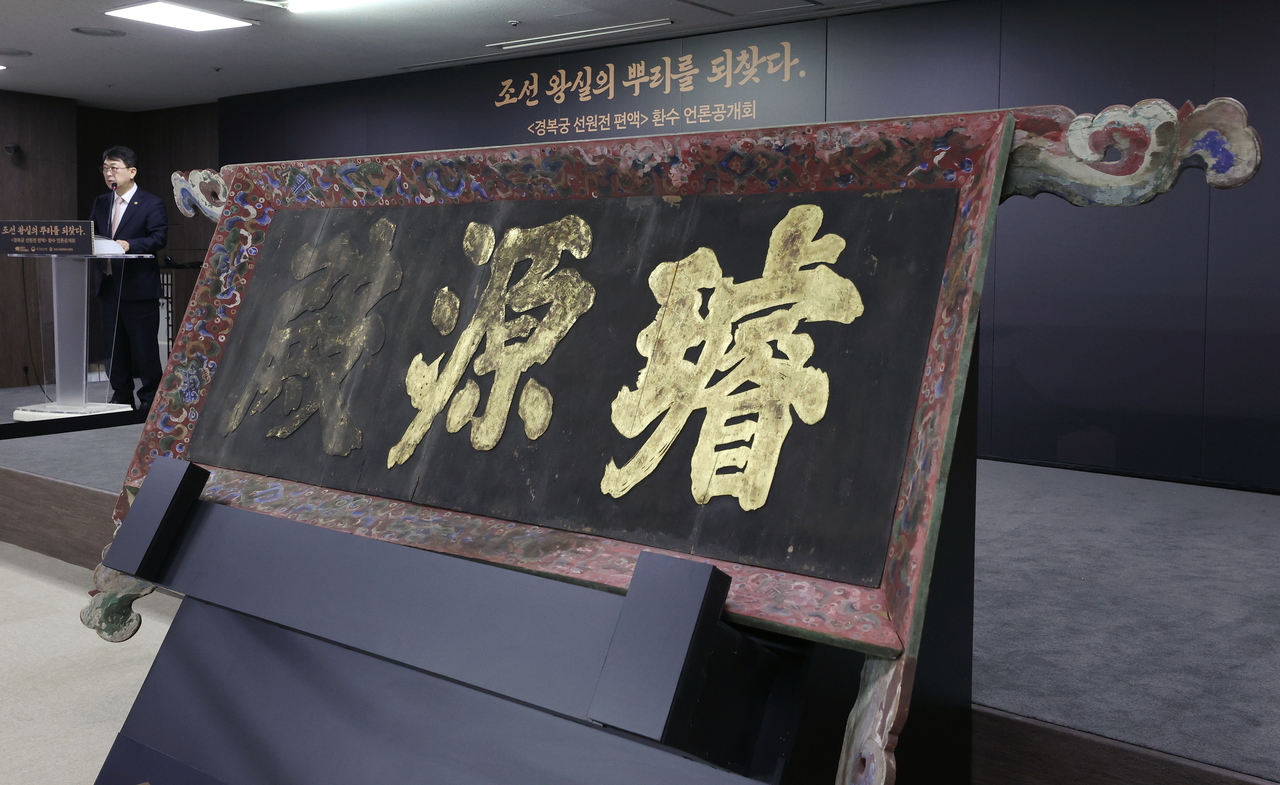
The signboard that hung on the now-gone royal Seonwonjeon Hall was unveiled to the public Thursday after the authorities brought the 19th-century historical artifact back to Gyungbokgung.
The Korea Heritage Service and the government-affiliated Overseas Korean Cultural Heritage Foundation revealed the signboard at 10 a.m. at the National Palace Museum of Korea in Jongno-gu, central Seoul, located inside the main Joseon-era palace. The current location of the museum — where the signboard will be kept — is where Gyungbokgung's Seonwonjeon stood over 100 years ago.
The authorities discovered the lost artifact had been put up for auction in Japan in 2023 and persuaded the owner to return it. Video game developer Riot Games funded the artifact's reacquisition as part of its project to protect the country's cultural assets since 2012.
The wooden signboard bears the Chinese characters meaning "Seonwonjeon," referring to the Gyungbokgung Hall that was lost in the early 20th century. Seonwonjeon Hall was where portraits of past Joseon kings were hung, symbolizing the roots of the royal family and hosting the incumbent kings' rituals to their ancestors.
The signboard is thought to have adorned the sacred hall some 150 years ago, and the writing on it is believed to be written by 19th-century royal official Seo Seung-bo.
It was lost sometime after the Seonwonjeon relinquished its functions when King Gojong located his office and residence in 1897. The hall was dismantled afterward, and its parts were used for the now-destroyed Bakmunsa Temple in Jung-gu, Seoul, built in 1932 and dedicated to Japan's Resident-General of Korea, Ito Hirobumi.
Authorities are unsure exactly how the signboard was lost and taken to Japan.
The KHS plans to start the reconstruction of Seonwonjeon Hall in 2030, after the National Palace Museum is relocated to Sejong. The reclaimed signboard will adorn the rebuilt hall.
minsikyoon@heraldcorp.com




